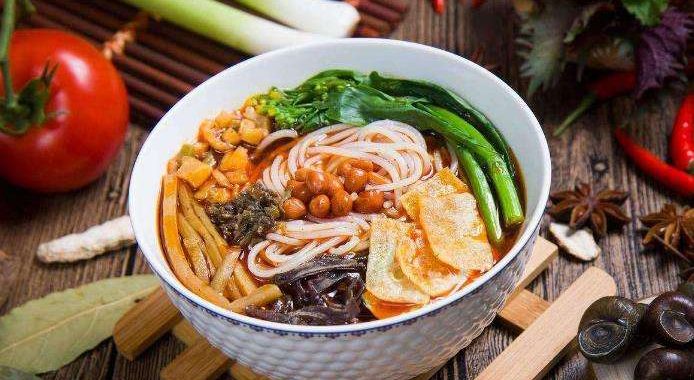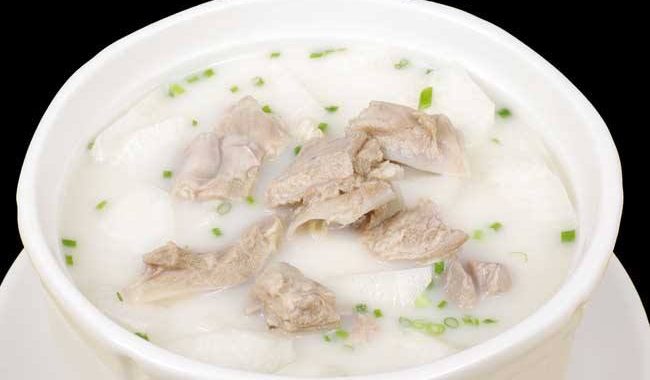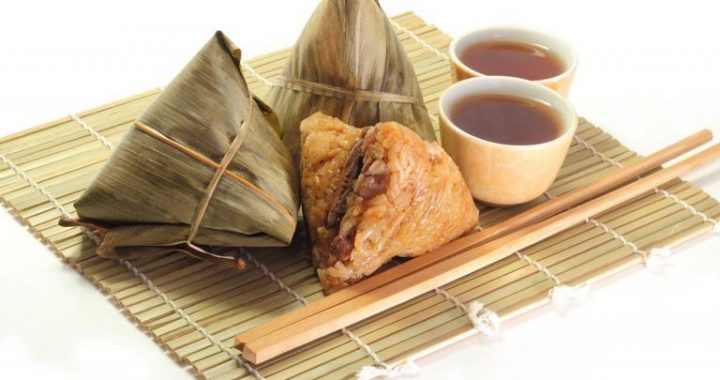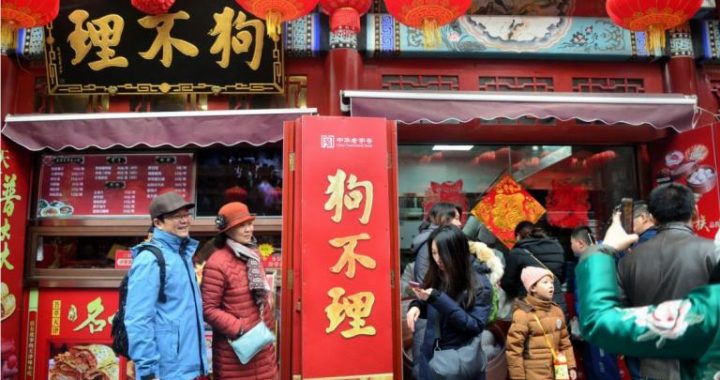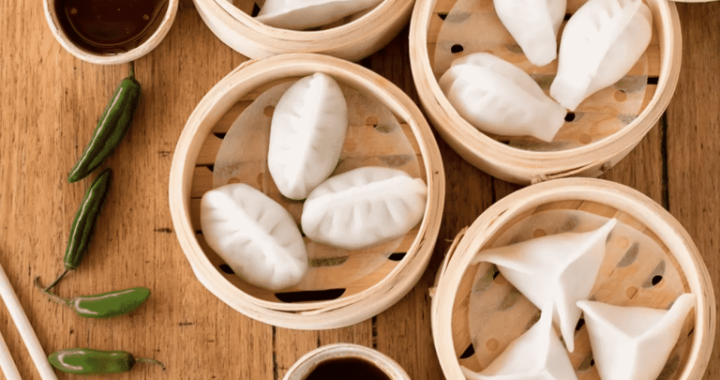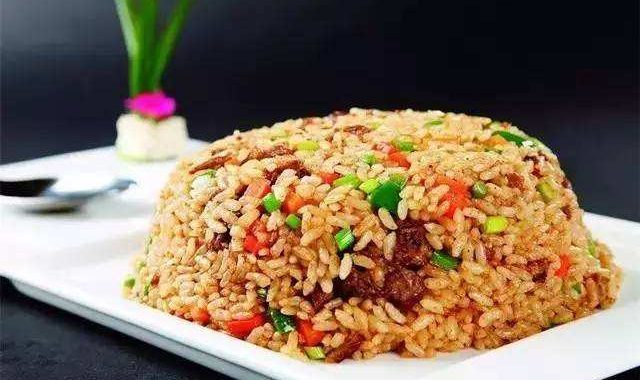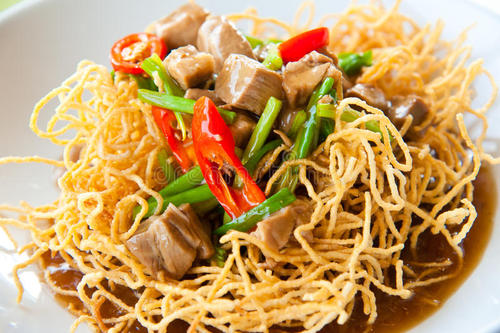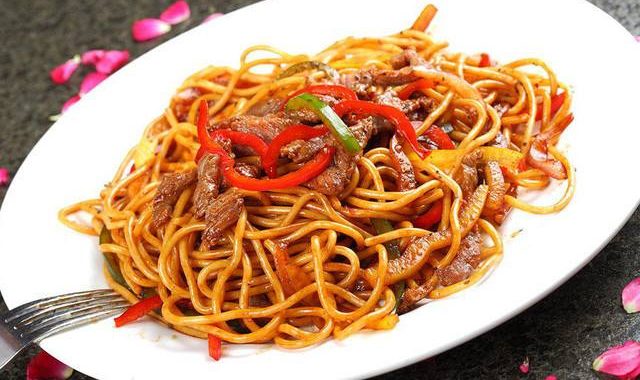The Culinary Arts
11 min readIn China,professional cooks were called“pao”in ancient times.Today they are called |零音s chefs.Although many ancient Chinese dishes 3″jingdao”50一are world-famous,the people who created them are not generally well known.However,PengZu and Yi Yin were two cooks from ancient China who achieved fame.Yi Yin was China’s first cook about whom records remain.He was a prime minister during the Shang Dynasty.He was not only learned,but also won the deep trust of the King of Shang thanks to his superbculinary skills.Whenever a sacrificial ceremony was held in the ancestral temple,Yi Yin would talk about diet and cookery with the king.
He was known as a“culinary god.”Later in China’s history,there were many other people who obtained high posts and generous salaries The statue of a cook from the Shu Kingdom of Three thanks to their superb cooking techniques,but Kingdoms Period.This was unearthed from Zhongfew won the respect that was given to Yi Yin.County,Sichuan and is displayed in the capital Museum in Beijing.

That said, cooking has always been a respected occupation among Chinese people. In ancient times cooks in popular restaurants that served ordinary people were called “market cooks”and they established reputations for themselves based on their skills and techniques. Today, as a result of the development of the catering industry in China, kitchen work has become more and more specialized and new posts, such as”cooking technician”and “pastry technician”have been created. In the past, cooking skills were gained through apprenticeships, in which trainees were taught by personal example and verbal instruction. Today, although apprenticeships still exist, cooking is studied in special occupational schools that award the Occupational Qualification Certificate of the People’s Republic of China. Students at such schools study culinary techniques along with the fundamentals of nutritional science. Qualified cooks are then promoted through a process of professional testing and evaluation.
In ancient times, those housewives who were responsible for cooking in the home were called”kitchen wives”. In the past most Chinese women studied cooking, as this was a required part of their”family education”before marriage. Women who were good cooks were often coveted by people who liked eating. Today, even though many women work outside the home, housewives who can cook well are a source of immense pride to their families.
Another group of people who contributed to China’s eating culture in the past were the country’s scholar-bureaucrats. These intellectuals commented on and recorded the accomplishments of China’s cooks and helped to elevate the level of the nation’s cooking. Sometimes they also participated in the creation of new dishes themselves. For example, Su Shi(1036-1101) was a Chinese writer of the Song Dynasty who was also a gourmet. He was also known as the”Dongpo Hermit”and created a dish known as “Dongpo pork”. The recipe for this delicacy was passed downfrom generation to generation. Yuan Mei(1716-1797) was a poet of the Qing Dynasty. He described 326Chinese dishes and desserts that dated from the 14h to the mid-18h centuries in his work Suiyuan Menu. This book included delicacies using ingredients from both the land and sea and from both southern and northern China. Yuan Mei recorded a lot of important historical material aboutChina’s eating culture. He is known to have had extensive knowledge about cooking and is reputed to have been a gourmet with exquisite tastes. Traditionally, wealthy families all employed cooks tocook their daily meals and to prepare banquets. Such families usually held banquets in their homes instead of going to restaurants.
Cooks preparing a baba banquet on the Qingcheng Back Housewives cooking a big dish together at a feast during Mountain in Dujiangyan, Sichuan. This is a custom of the Lantern Festival in Yayang Town, Taishun, Zhejiang.
Commonly called a”nine-dish feast,”such a banquet is held by a family to mark occasions such as weddings, births and the building of a new home.
Chinese cooks must have a wide range of skills, including the ability to choose, mix, cut, cook and season their ingredients properly. Chinese food in restaurants is ordered according to ready-made menus. Every aspect of how the items on the menu is cooked is determined by the restaurant’ schefs, unless guests put forward their own specific requirements. Therefore, the same dish prepared by the same cook normally has the same taste every time it is prepared.
The quality of the ingredients used to make Chinese food is important as each ingredient has an effect on the color, smell and taste of the finished dish it is a part of. Chinese chefs therefore give careful consideration to the type of ingredients they use. They examine the quality of eachingredient and consider factors such as where it has come from, how it has been produced and how it has been prepared. Take Beijing roast duck, for example. Only “crammed ducks”weighing about 2.5kilograms are used. The meat of ducks larger than this is not tender enough, and the meat of smaller duck does not have enough fat. Only tenderloin of pork is used for”quick-fried pork filet slices with sauce”, while only streaky pork containing both fat and lean meat is used for “steamed pork with rice flavor in lotus leaves.”
Chinese chefs also pay careful attention to the way ingredients are mixed and to their shapes, textures and colors. For example, when preparing stir-fried tomatoes and eggs, they ensure that the ingredients’ red and yellow colors are prominent. In terms how dishes look, Chinese chefs usually strive for a consistent appearance, so, for example, shredded are matched with shredded ingredients. When it comes to the food textures, soft materials are usually matched with soft ones, crisp materials are matched with crisp ones and flexible materials are matched with flexible ones-for example, braised bean curd is paired with fish and sliced squid is stir-fried with garlic sprouts.
Sometimes, ingredients are specially prepared before they are used. For example,”West Lake fish in vinegar gravy”(a famous dish from Hangzhou) is prepared with live grass carp caught from local fresh water lakes. The meat from these fish is naturally loose and smells of soil, so, before they are used, they are put into clear water for two days(which removes the taste of soil). They are then cooked to make their meat fresh and tender.
A cook in a hand-pulled noodle restaurant in Lanzhou, Gansu. He is preparing ingredients to add to the noodles the restaurant sells.
Ingredients are also matched to balance their flavors and properties and to maximize their health benefits. For example, radishes have the effect of clearing away heat, so it is appropriate to match them with hot-natured mutton. Spinach and tomatoes contain a lot of acidic materials so they are stir-friend with bean curd, which contains a lot of calcium(in the form of calcium salt). This stops the intestines and stomach from absorbing too much acid.
Chinese cooks call the intensity of the fire used to cook food and the length of time it is cooked as the”degree of heating”. It is very important to use the right degree of heating for any particular dish. For example,a roaring fire must be used in stir-frying, or the stir-fried dish will be too loose.
A slow fire must be used for stewing or the food will dry out. If food is deep fried for too long a time it will be overcooked and its taste will be spoiled. Using the correct degree of heating is most important when cooking fish. Cooked fish should be as white as jade and firm and this result can only be achieved when it is heated properly. Some food, such as eggs and kidneys, becomes beautifully tender when it is boiled for a long time. However, some food, such as fresh fish and clams, become stiff if it is boiled for too long. Getting the degree of heating right takes years of practical experience, but it is a vital skill for a chef to have. Experienced cooks should be able to cook foods of all kinds at the correct temperature and for the correct time. They should also be able to get the balance of tastes in the food they make just right. Take stir-fried pork liver, for example.
It must be cooked using a roaring fire until it is between 70 and 80 percent done. The pork liver should only be put into the frying pan when blue smoke rises from oil. It should then be stir-fried quickly. Thick soup should then be added and the ingredients shaken together. If the fire is not intensive enough, the degree of heating will be insufficient and the pork liver will not be tender; if the fire is too intensive and the oil is too hot, the tenderness of the liver will also be affected.
Getting the degree of heating right is not simple as there are many factors to take into consideration, including the cooking utensils and the type of heat used. Modern Chinese people normally use natural gas or coal gas stoves to cook food, while the ancient Chinese normally used firewood. People in years gone by had many rules for the types of fuel that should be used to cook specific foods. For example, it was thought that stewing duck or other meat using burning mulberry wood would make the meat soft and remove any toxic substances. Boiling rice with burning rice ears was said to have the effect of tranquilization, while boiling rice using burning wheat straws was said to produce food that would quench the thirst, moisten the throat and promote urination.
Boiling rice using burning pinewood was thought to produce food that would strengthen bones and muscles.Tea was normally boiled over a charcoal fire.However it was thought that if a fire fueled with thatch grass was used the resulting brew would be free from toxins and could be used to improve a person’s eyesight.It was also believed that tonic medicines should be boiled using a fire fueled with burning reeds and bamboo.Today,these customs are still observed in some remote regions of China.To help them cook,modern Chinese people can choose from a variety of different cooking utensils.To get the concentrated heat needed for stir-fried dishes,they use round-bottomed frying pans.To get the even heat needed for frying food,they use flat-bottomed iron pans.

To get the slow heat needed for stewing(for dishes such as hen soup,radishes stewed with spare-ribs and white fungus and lotus seed soup),they usually use earthen pots.
A young cook showing his cutting skills.He has cut a cucumber measuring 25 centimeters in length into a string of slices more than one meter long.
The way in which raw ingredients are cut and prepared is one of the main differences between Eastern and Western cooking. Most Chinese food is carefully cut up into bite-sized pieces by a chef before it is cooked, while many Western foods(such as steak) have to be cut up by the person eatingit using a knife and fork. Chinese cooks pay great attention to the way they cut their ingredients and are very proud of their chopping skills. There are more than 100 cutting methods. These have names such as the straight cutting method, the slicing method, the oblique cutting method and the carving method(which involves carving a piece of food with a knife without severing it). Many dishes require a complex range of cutting techniques. Take “stir-fried scalloped pork,”for example.
More than ten cutting methods are used to prepare this dish. This is done so that the resulting food resembles wheat ears, lychees, the Chinese character for longevity, combs, orchids and straw rain capes. Different cutting methods are used for different raw materials, as shown in the saying that”beef should be cut vertically and chicken should be cut along the veins.”This approach is takenbecause the muscle fibers in beef are thick, so cutting through them can facilitate cooking, whilethe muscle fibers in chickens are thin, so cutting along them helps to maintain the meat’s smooth texture and stops it being spoiled when it is stir-fried.
The Chinese people use a diverse range of cooking techniques. There are no less than 20 such skills, which include stir-frying, quick-frying, frying, frying in shallow oil, braising, stewing, boiling and steaming, and there are many famous dishes that are made using each technique.
The most commonly used technique is “stir-frying”(which is a type of cooking that has become increasingly popular in the West in recent years). In most Chinese homes pans are used formultiple purposes such as stir-frying dishes and boiling soup, but professional cooks use special pans for stir-frying. These pans have a handle so that they can be easily lifted up and moved around in all directions. This handle allows ingredients to be stirred and flipped while they are cooking.
This makes it easy to mix them well and to heat them evenly. The pan flipping technique involves a complex set of actions that are quite difficult to learn, however some cooks are experts at flipping their ingredients in very flamboyant ways: they lift their pans up and flip the vegetables and meat they are cooking up into the air. These ingredients then fall back into the pan in an elegant arc. Thestir-frying skills of flipping, stirring and lifting cannot be performed with Western-style pans. They are a set of unique techniques that are prized by Chinese cooks.
A cook in a Hong Kong street restaurant stir-frying a dish A cook in Shenyang, Liaoning flipping food from a pan.
He is stir-frying ten dishes at the same time.
Before the Han Dynasty, the Chinese people had not developed stir-frying and the main cooking techniques were boiling in soup, roasting, boiling in water and frying. After stir-frying was invented, it was quickly taken up by people across the country and eventually became the most important Chinese cooking method. As a result “stir-frying”became used as a collective term for all culinary activities. Today, many people call dishes that are prepared with pans “stir-fried dishes”whether they are fried, quick-fried, stir-fried, boiled or steamed.
Chinese people judge whether a dish is good or bad based on its color, smell and taste. Stir-frying is such a popular way of preparing food because it is the easiest way to produce food thatlooks, smells and tastes delicious. Stir-frying can be used to cook a wide variety of raw materials prepared in a wide variety of ways. For example, radishes, cabbages, cucumbers and bean curd, cut into thin shreds, thin slices or small cubes, can all be included in a stir-fried dish. This makes it easy for a chef to create a wide variety of “color”in the food he is cooking. Most stir-fried dishes require hot oil and intensive heat, which enhances the taste of the ingredients being cooked and helps release their fragrances. For example, when garlic powder or sliced scallion is stir-fried quickly,a
delicious aroma is created. Because stir-fried food is only cooked for a short time using an intense heat the nutrients it contains are sealed into the food and preserved.
The sophisticated techniques, skills and recipes that lie at the heart of Chinese cooking evolved over time, as China itself developed into a sophisticated and culturally rich society. However,a number of modern developments are changing the way people prepare food and many time-honored skills, techniques and recipes are in danger of being lost. For example, many ready-made and quick-frozen food products are being produced in food-processing factories. These are now available in supermarkets and are becoming increasingly popular. In addition, more and more Chinese people are using electric cooking utensils that can be programmed to cook food automatically. As a result, many Chinese cooks are losing their basic cooking skills and are no longer able to mix, cut and heat ingredients properly. It is undeniable that Chinese culinary skills are gradually becoming less important thanks to the development of mass-produced foods. However, it is important that these skills continue to be cultivated by as many people as possible, so that the Chinese can continue to enjoy the exquisite tastes, colors and smells of the foods they have enjoyed in the past.

